Commerce Exam > Commerce Notes > Economics Class 12 > Short Notes: Introduction to Macroeconomics
Short Notes: Introduction to Macroeconomics | Economics Class 12 - Commerce PDF Download
Introduction
- Macroeconomics, derived from the Greek word ‘makro’ meaning "large," studies economy-wide phenomena such as total income, spending, and production.
- Focuses on aggregates—groups of economic items sharing common traits, e.g., total savings or consumption.
- Gained prominence after John Maynard Keynes’ 1936 book, The General Theory of Employment, Interest, and Money, which addressed economy-wide issues.
- Examines policies to achieve full employment, economic growth, and stability in production and prices.
- Adam Smith, considered the father of modern economics, argued that self-interested actions of buyers and sellers could benefit the nation’s wealth, but macroeconomics recognises the need to study aggregate effects beyond individual decisions.
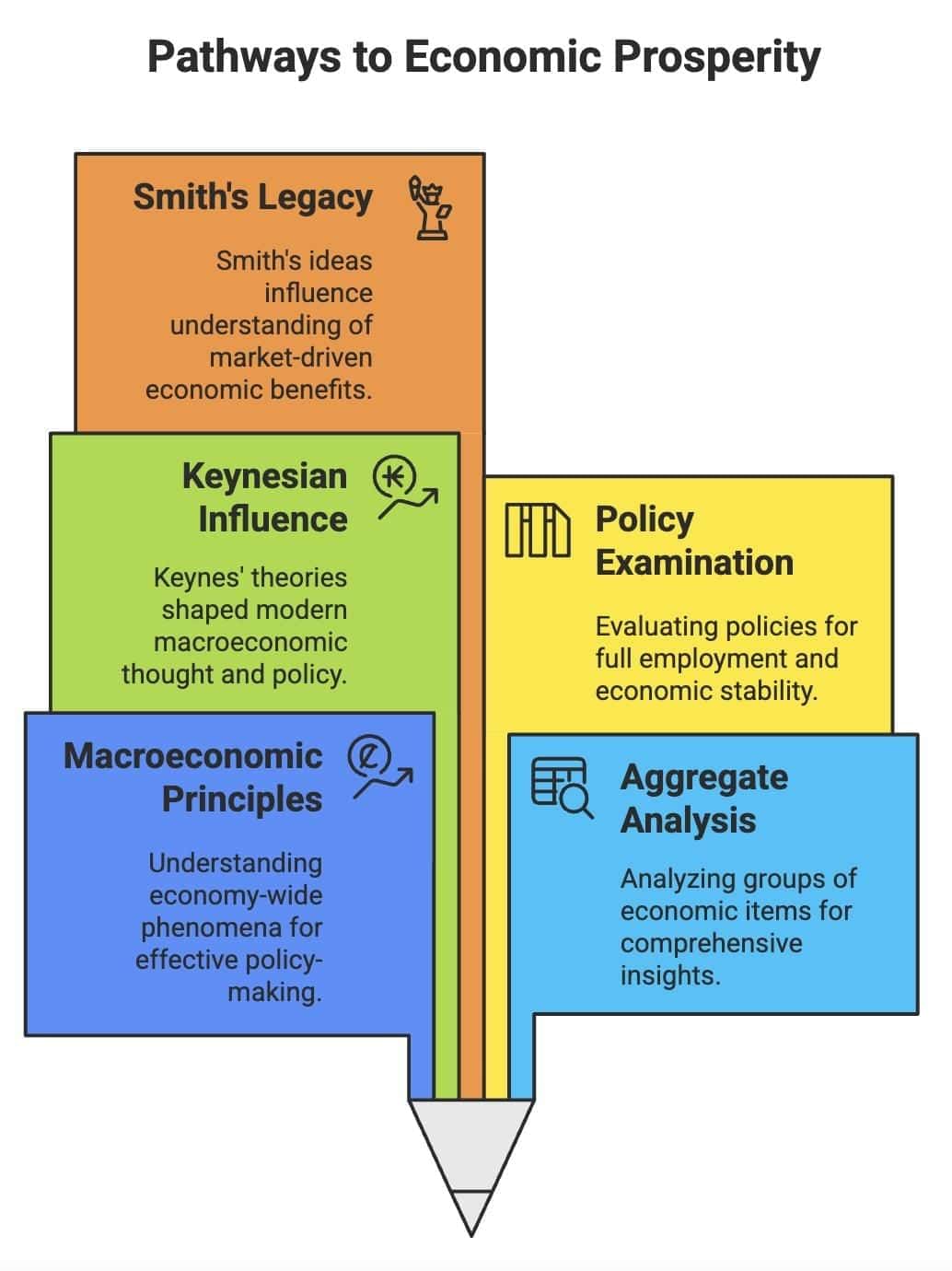

Question for Short Notes: Introduction to MacroeconomicsTry yourself:What does macroeconomics primarily focus on?
View Solution
Economic Agents
- Economic agents are individuals or entities making economic decisions, including:
- Producers/service providers deciding what and how much to produce.
- Governments set policies on spending, taxes, and regulations.
- Corporations and banks influence investment, interest rates, and credit.
- Macroeconomic agents (e.g., Reserve Bank of India, SEBI) prioritise public welfare over private profit, guided by law or constitutional mandates.

Key Areas of Macroeconomics
- Analyzes the impact of taxation and budgetary policies on markets and economic activity.
- Studies monetary policies affecting money supply, interest rates, wages, employment, and output.
- Addresses market failures where supply and demand do not balance, or markets do not exist for certain goods/services.
- Pursues social goals like full employment, education, health, defense, and administration through policy interventions.
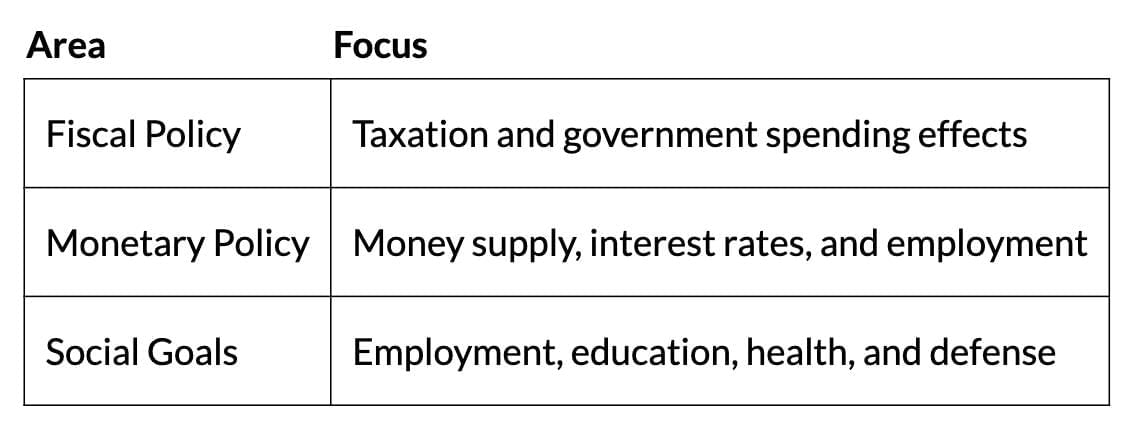
Relationship with Microeconomics
- Macroeconomics builds on microeconomic principles, analyzing aggregate demand and supply across markets.
- Addresses societal goals (e.g., reducing inequality) that individual market decisions may not achieve.
- Modifies market outcomes through policies to align with public needs, such as employment or healthcare access.
Macroeconomics in Developing Countries
- In countries like India, macroeconomic policies aim to:
- Eliminate or reduce unemployment.
- Enhance access to education and primary healthcare.
- Ensure effective governance and administration.
- Provide adequate defense capabilities.
- Policies are executed by state institutions (e.g., RBI, SEBI) with public welfare as the primary goal.
- Focus on directing economic resources to meet collective needs rather than individual profit.
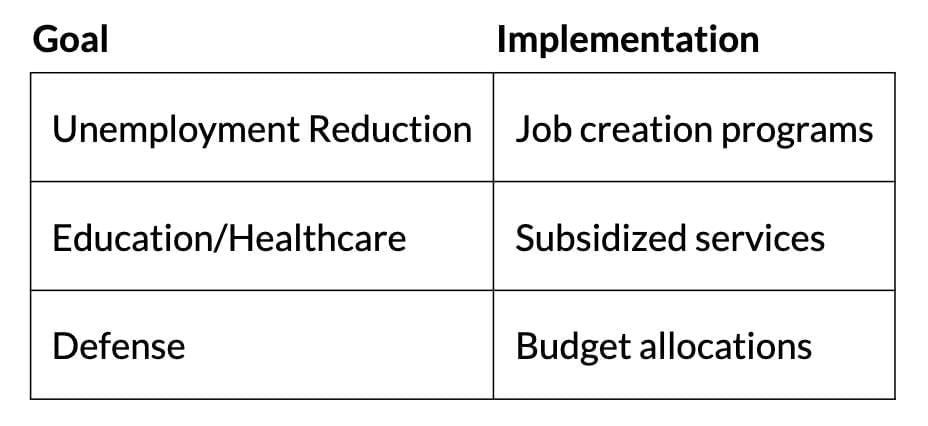
Emergence of Macroeconomics
- Triggered by the 1929 Great Depression, which led to:
- Unemployment rising from 3% (1929) to 25% (1933) in the USA.
- A 33% decline in aggregate output in the USA from 1929–1933.
- Low demand, idle factories, and widespread job losses globally.
- Keynes’ 1936 book challenged classical economics, which assumed full employment and full factory utilisation.
- Introduced the need to theorise long-lasting unemployment and economy-wide interdependencies.
- Unemployment rate: Number of people seeking work but unemployed divided by the total labour force.
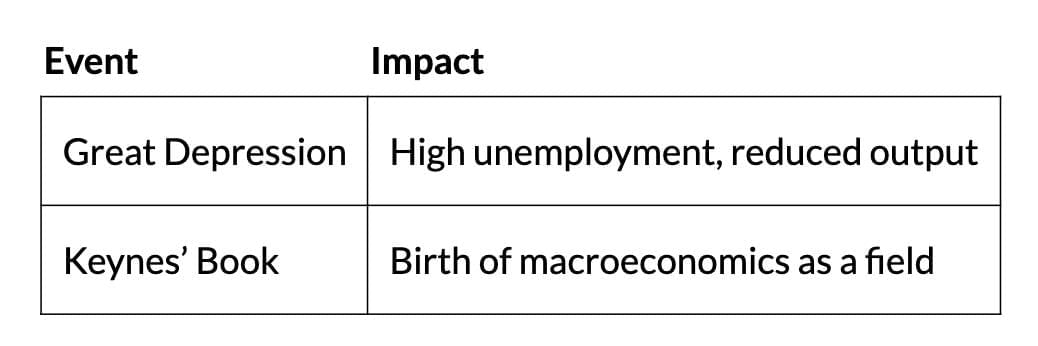
Capitalist Economy
- Characterised by private ownership of production means, driven by profit motive.
- Operates with minimal government interference (laissez-faire), controlled by market prices.
- Key features:
- Private property, freedom of enterprise, and consumer choice.
- Flexible labor markets and price control by supply/demand.
- Examples: Hong Kong, Singapore, Canada, UAE, Ireland.
- Key terms:
- Revenue: Income from business activities (price × units sold).
- Investment Expenditure: Spending on capital assets (e.g., machinery, buildings).
- Wage Rate: Payment for labour services.
- Wage Labour: Work performed for wages.
- Entrepreneurs: Individuals who start businesses, bearing risks for rewards.

Four Main Sectors of the Economy
Household Sector:- Includes consumers providing land, labour, capital, and entrepreneurship.
- Contributes to GDP through consumption expenditures.
- A household is a person/group making independent economic decisions.
- Firms produce goods/services using production factors, aiming for profit.
- Includes sole proprietorships, partnerships, and corporations.
- Contributes to GDP via investment expenditure.
- Maintains law and order, promotes growth, and provides public services.
- Funds projects (e.g., roads, dams) through taxes.
- Invests in education and health, offering them at low cost.
- Contributes to GDP through government purchases.
- Manages exports (domestic goods sold abroad) and imports (foreign goods bought).
- Includes capital inflows/outflows (investments to/from other countries).
- Contributes to GDP via net exports (exports minus imports).
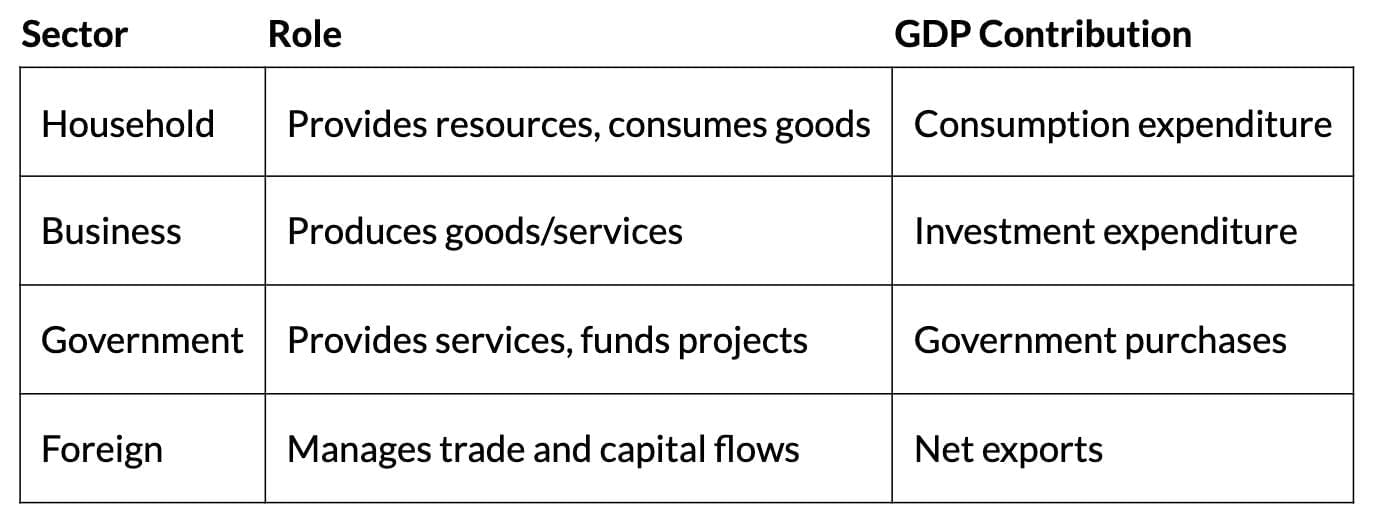
Conclusion
- Macroeconomics, inspired by Keynes, provides a holistic view of economic activity, focusing on aggregate demand and supply.
- Guides policies to address unemployment, promote growth, and achieve societal goals like education and healthcare access.
- Relies on the interplay of economic sectors and policies, akin to a symphony of instruments, for a balanced and prosperous economy.
The document Short Notes: Introduction to Macroeconomics | Economics Class 12 - Commerce is a part of the Commerce Course Economics Class 12.
All you need of Commerce at this link: Commerce
|
64 videos|308 docs|51 tests
|
FAQs on Short Notes: Introduction to Macroeconomics - Economics Class 12 - Commerce
| 1. What are the key areas of macroeconomics? |  |
Ans. The key areas of macroeconomics include national income accounting, inflation, unemployment, economic growth, and monetary and fiscal policy. These areas help economists understand the overall functioning of an economy and how various sectors interact.
| 2. How does macroeconomics relate to microeconomics? |  |
Ans. Macroeconomics and microeconomics are interconnected fields of economics. While macroeconomics focuses on the economy as a whole, including aggregate indicators like GDP and inflation, microeconomics deals with individual agents such as households and firms. Understanding macroeconomic trends can help microeconomic agents make informed decisions.
| 3. What is the significance of studying macroeconomics in developing countries? |  |
Ans. Studying macroeconomics in developing countries is crucial because it helps identify the unique challenges these economies face, such as high unemployment, inflation, and limited access to capital. Macroeconomic policies can aid in promoting sustainable growth, reducing poverty, and improving living standards in these regions.
| 4. What are the four main sectors of the economy in macroeconomics? |  |
Ans. The four main sectors of the economy are the primary sector (agriculture and natural resources), the secondary sector (manufacturing and industry), the tertiary sector (services), and the quaternary sector (knowledge-based services like education and IT). Each sector plays a vital role in the overall economic structure and growth.
| 5. How did macroeconomics emerge as a distinct field of study? |  |
Ans. Macroeconomics emerged as a distinct field of study during the Great Depression in the 1930s when traditional economic theories failed to explain the widespread economic downturn. Economists like John Maynard Keynes developed new theories focusing on aggregate demand and government intervention, laying the groundwork for modern macroeconomic thought.
Related Searches
















